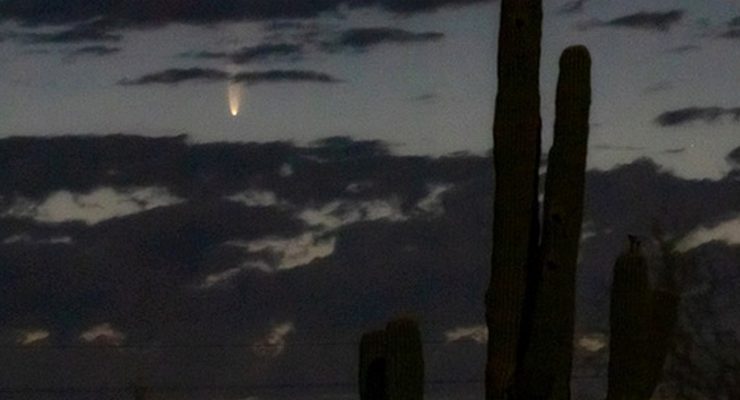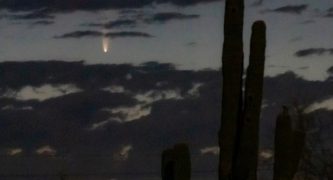
Pasadena missed out on the fireworks at the Rose Bowl this year, but a comet will provide a show to remember starting this weekend, according to NASA’s Jet Propulsion Laboratory.
A comet known to scientists as C/2020 F3 NEOWISE,will be most visible in the northeastern sky about an hour before sunrise, close to the horizon, JPL said in a written statement. It’s expected to first appear shortly after sunset on Saturday, but will then be most visible just before dawn into mid-August, when it will slip back into the vastness of space and out of view.
“Observers might be able to see the comet’s central core, or nucleus, with the naked eye in dark skies; using binoculars will give viewers a good look at the fuzzy comet and its long, streaky tail,” the statement said.
This comet’s close proximity to the Sun limits when it can be seen.
NEOWISE “made its once-in-our-lifetimes close approach to the Sun” on July 3, according to JPL.
“This very close passage by the Sun is cooking the comet’s outermost layers, causing gas and dust to erupt off the icy surface and creating a large tail of debris. And yet the comet has managed to survive this intense roasting,” according to the JPL statement.
“Observers all over the world are racing to see the natural fireworks display before the comet speeds away into the depths of space. Even the astronauts aboard the International Space Station spotted it from their vantage point high above Earth’s atmosphere.”
The comet is expected to fly by Earth as a “harmless” distance of 64 million miles, “while giving astronomers the opportunity to learn more about its composition and structure,” the statement said.
But already, astronomers are learning a great deal about the visitor from the data they’ve collected so far, said Joseph Masiero, NEOWISE deputy principal investigator at JPL.
“From its infrared signature, we can tell that it is about 5 kilometers (3 miles) across, and by combining the infrared data with visible-light images, we can tell that the comet’s nucleus is covered with sooty, dark particles left over from its formation near the birth of our solar system 4.6 billion years ago,” he explained.
The comet was first discovered on March 27 when NASA’s Near-Earth Object Wide-field Infrared Survey Explorer (NEOWISE) space telescope detected heat signatures given off by the object, officials said.
“In its discovery images, Comet NEOWISE appeared as a glowing, fuzzy dot moving across the sky even when it was still pretty far away,” according to Amy Mainzer, NEOWISE principal investigator at the University of Arizona. “As soon as we saw how close it would come to the Sun, we had hopes that it would put on a good show.”
More information is available online on JPL’s website.














 0 comments
0 comments


